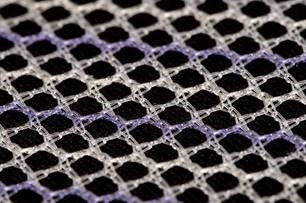Biomedical Textile Constructs: Warp vs. Weft Knitting
Vertical integration at Poly-Med allows us to utilize our own unique materials for a vast array of downstream processing. We use bioresorbable polymers made in-house every day for custom applications in 3D printing, fiber extrusion, electrospinning, and more! This allows us to efficiently move a unique material from raw material processing into a fully formed device component. This vertical integration gives us a unique advantage in the medical textile industry, as we are able to manufacture custom, medical-grade textiles from raw materials to final products under one roof.
Of the many ways to produce textile products suitable for medical devices, warp knitting and weft knitting (circular) are some of the most commonly used in medical and other textile industries, including extensive use in the apparel industry. Each method offers unique benefits and final properties, so choosing the correct one for a specific medical application can be critical! At Poly-Med, we can help you decide which production method best suits your specific application.
Weft Knitting:
Weft knitting requires only a single yarn feed and produces a very simple stitch so that the created stitches interlock the yarn with itself. The result is a tubular knit fabric with very high flexibility and stretch. The single yarn input allows for production of very thin fabrics at a variety of fabric widths. For unique applications, the production of a tubular fabric can even allow for 3D constructs with minimal or no seams. One of the main benefits to weft knitting is cost. This knitting method only requires the single yarn feed, so trial runs can be conducted with minimal material input requirements and fewer processing steps to get started. Weft knitting can be used to produce very narrow fabrics, further reducing costs to trial out unique materials or applications. Processing times are generally short and are easily scaled between short, one-off trials and mass production.
Warp Knitting:
Warp knitting allows for many more customizations to the fabric materials and properties. Unlike the single yarn feed used in weft knitting, warp knitting requires individual ends to feed in across the entire width of the fabric. This requires some additional work to prepare the material for knitting, but offers more options for a custom fabric. Striping can be incorporated along the length of the fabric by mixing materials and the stitching pattern can be fully customized for each yarn input end. Unique combinations of materials and stitching patterns allow for very custom fabrics designed to meet specific attributes and mechanical properties. The resulting material is often more dimensionally stable and less prone to runs than weft-knit products.
Weft knitting and warp knitting represent only two (2) of the capabilities at Poly-Med to produce unique medical device components using bioresorbable polymers. If you are working on a medical device and are interesting in learning more about degradable polymers and how to process them, contact us to learn how we can advance your idea.



